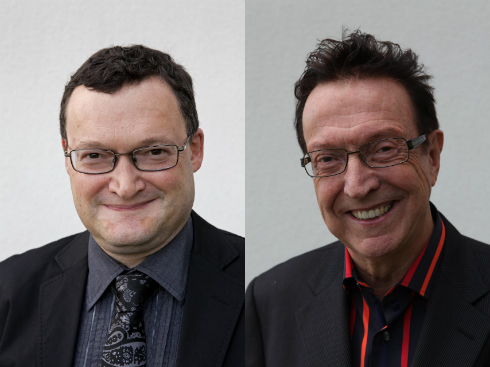
While many organizations have turned to agile as a way to streamline their development processes, the road to successfully implementing agile is bumpy. For organizations who want to achieve and maintain a sustainable agile transformation long-term, Ivar Jacobson, founder and chairman of Ivar Jacobson International, and Ian Spence, head of research and development at Ivar Jacobson International, shed some light on how to do that.
SD Times: What is a sustainable agile transformation and why is it desirable?
Jacobson and Spence: A sustainable agile transformation is one that creates a self-sustaining, continuously learning organization focused on delivering improved business results. Too many agile transformations fall into one of four traps:
- They see the end state as everybody using a specific “agile process” rather than being agile
- They don’t focus on delivering real business benefit
- They don’t set up the mechanisms for the teams to safely own and evolve their ways of working
- They buy into the fallacy of the “one true process” and don’t allow the practices to evolve as the teams innovate
A truly agile organization is a learning organization continually refining and improving all its practices. It is not an organization that flits from one fad to another or continuously replaces one flawed process with another, more fashionable one. Change is constant and a sustainable agile transformation harnesses the forces of change for the long-term future of the company.
What are some approaches organizations can take to implement agile in a sustainable way?
In our experience, focus on results. Always remember why you are implementing an agile approach. Too many agile transformations stall when they are unable to demonstrate that the new way of working is any better than the old way. The mistake they make is to think agility is an end in itself rather than an enabler for better business performance. Quantify the results you are looking for and make sure you measure the effect of the transformation.
Be sure to set teams’ challenges rather than mandating solutions. The key to any agile transformation is creating a culture where teams are empowered, self-organizing and responsible for delivering business value via working software. This is hard to achieve if you tell them how to do their jobs. Instead, use the result-based measures from point 1 to set the teams’ challenges. If they can achieve these without using the latest, most fashionable agile practices, more power to them. If you set up self-organizing and empowered teams, and present them with the right challenges and support, they will achieve remarkable things often in ways you would never have thought of.
Make sure to have principles and values at the heart of the transformation. Agile practices provide ways for teams to meet the challenges of their day-to-day work. To select the right practices, the teams need to hold true to agile and lean values, values that need to be front and center for the whole organization and at the heart of the transformation.
Set up a knowledge hub to help the teams share their practices and experiences. Use technology to connect teams and help them to share their practices and experiences. The knowledge hub provides the organizational memory and other collaborative mechanisms that enable the creation of a true learning organization.
Run the change in an agile way. Change is continuous and ever present. It is something that organizations need to harness rather than resist, and something that lends itself to an agile approach. Create a backlog to drive the change through a series of change epics and their related actionable measures. Each new change will result in new or changed practices that can be shared and disseminated from the early adopters to the rest of the organization, via the knowledge hub.
And finally, and most importantly, structure the organization into a dynamic network of small cross-functional teams. At the heart of any successful sustainable agile transformation are the teams. Set up the teams in line with agile principles and values, create a supportive environment, give them challenges, and let them self-organize to deliver business benefit.
How can organizations sustain change long-term?
A lot of this is covered in our previous answer, but in our experience the key to long-term sustainability is to build your own core competency by setting up empowered communities of practice. Take empowerment outside the boundaries of people’s immediate cross-functional teams and extend it to the whole organization and the whole way of working.
Encourage knowledge-sharing via a practice/knowledge hub in order to make it easy for people to share their experiences and get help from one another.
In addition, continuously set new challenges or teams to improve. Don’t become complacent or declare victory too early. There are always better ways of working, so keep asking teams to improve in ways that will directly benefit the business.
Lastly, establish some common ground for the organization. A true learning organization must start to talk the same language. One mechanism is to use the ideas in the Essence Kernel to bring teams and practices together in a sustainable fashion. This is key to allow the free flow of knowledge and experience between the teams, and to ensuring there are equal rights for all the practices regardless of their source and heritage.
What are some of the biggest challenges organizations face during an agile transformation, and how can they avoid them?
There are many challenges that organizations face in their journey to becoming a truly lean and agile learning organization. Some of the most common include:
- Lack of discipline: Agile practices require discipline. Although simple to comprehend, many agile practices are hard for people to maintain as they lose sight of the values and principles that underpin their way of working. For many teams adopting agile practices, the discipline is the first thing to go as has been seen with many Scrum teams who quickly give up on daily standups, demos and retrospectives, and revert to their old practices with a thin veneer of the new terminology.
- Coaching becoming an end in itself: Teams new to agile need coaching to help them apply the new way of working in a way that will benefit them. Unfortunately, too many of the coaches seem to think that they are more important than the team and try to create permanent positions of power for themselves within the team. The coaches then become permanent team members whose advice is ignored once, if ever, they leave the team. The need for coaching never goes away, but it should be a natural part of everyone’s work rather than the provenance of a self-elected elite.
- Lack of tangible business results: As mentioned above, too many transformations fail to track the benefits they are generating for the business, and in many cases seem to leave the organization no better off than they were before.
- Impatience: Creating an agile organization is not something that happens overnight. Agility is no silver bullet and not every agile team, or project, will be successful. Patience is needed to see the transformation through and reap the full benefits of agility. In our experience, the biggest benefits are achieved in the second year as agility becomes business as usual, and the effects of agile working ripple through the value chain. This can be tough for many organizations with yearly planning cycles and management reshuffles, leading them to change horses too often and never create a sustainable agile organization.
The best way to avoid these is to take an incremental approach to adoption with clear definitions of “done” and simple aspirational measures, not just for the software but for coaching as well. Making sure that the change initiative shows business benefits frequently, celebrating success and actively removing impediments.
There are many other traps organizations can easily fall into as they struggle to become more agile, such as:
- Gold-plating the method
- Not really empowering the teams
- Not preparing a proper foundation
- Ignoring governance
- Alienating important resources by making agility a crusade
Hopefully these are all self-explanatory, and our advice is just don’t do them.
How can organizations tell if agile is working for them and if they are on the right path to sustainable change?
These are really two discrete questions. The first of which is “How can organizations tell if agile is working for them?” Once again the key here is to establish a set of aspirational, actionable measures that the whole organization can buy into. Measures that would apply regardless of the philosophy, approach or practices that the teams adopt. This allows the teams to be truly empowered and even opt out of the agile transformation.
If they can achieve the goals set without changing, then more power to them. If we preach empowerment and self-organization, then we have to allow teams some self-determination. The trick is to use the challenges, measures, principles and values to stop teams going too far off-track and provide early-warning indicators so that they can understand the consequences of their decisions.
If the organization is meeting its improvement goals, delighting its customers, and keeping its teams happy and together while continually adapting to changing circumstances and delivering tangible business benefit, then agility is working for them.
The second question is “How do they know they are on the right path to sustainable change?” This one is slightly more difficult, but if there are active communities, convergence on best “practices,” continual experimentation and recognition of excellence through improved business results, then the organization is definitely on the right path.






